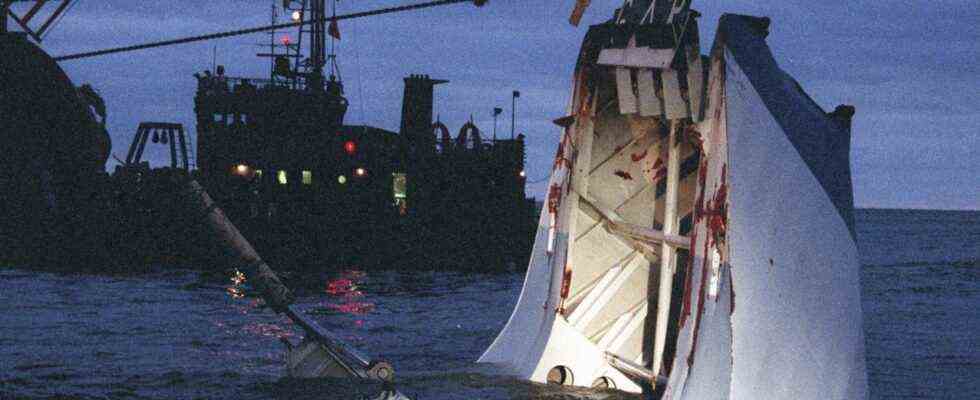Status: 07/08/2021 10:48 a.m.
To this day there is speculation about why the ferry “Estonia” sank in September 1994. Until recently, diving was prohibited. After a change in the law, experts can now look for new facts.
Carsten Schmiester, ARD Studio Stockholm,
currently in Hamburg
Dramatic emergency call from the bridge of the “Estonia” on September 28, 1994 at night during a heavy storm off the south coast of Finland – the last sign of life from the watch. The ferry listed, capsized, and sank quickly. 852 passengers and crew drowned, only 137 survived. What is certain is that the bow hatch was torn off and a lot of water entered the ship in a short time.
There are new references to the sinking of the “Estonia” ferry
Kristopher Sell, ARD Stockholm, daily news 12:00 p.m., 8 July 2021
Lots of research and lots of theories
There were investigations and processes, but in the end there were only a lot of theories: It was a design flaw, the front hatch was too weak, maybe it was poorly maintained. Also under discussion were: sabotage, illegal military transports on board, spies, a hole blown in the hull.
Last autumn there were the first television pictures – taken by an underwater robot that had been lowered to the wreck despite the diving ban: an opening about four meters high and at the largest point 1.20 meters wide made of partly dented and partly broken metal. Experts believe that it could have happened when the ship hit the bottom or before in a collision.
Kristopher Sell, ARD Stockholm, on the new investigations on the wreck of the “Estonia” ferry
tagesschau24 12:00 p.m., 8 July 2021
“Everything points to a warship”
Lars Ångström is a former member of the Reichstag in Sweden. He questioned the “bow flap theory” early on: “Calculations show that this hole could have been caused by something large with a weight of 1,000 to 3,000 tons and a journey of one and a half to four knots. So it wasn’t a container that weighs no more than 30 tons. It must have been a ship. A civilian ship would have no reason to keep it a secret, so everything points to a warship. ”
There are even rumors of a submarine. The “Estonia” is a burial site, until recently a general diving ban was in effect. But now Sweden, Finland and Estonia have changed the relevant laws, paving the way for a new official wreck investigation. It starts today.
At first without a diver and without a robot
Jonas Bäckstrand is head of the Swedish Average Commission and is happy that it is getting started: “I think that you have to investigate the new information that there are holes on the starboard side to see how they came about and why. So that the assessments come up Based on facts rather than speculation. ”
However, the start of the campaign, which is estimated to cost around 5.5 million euros, is rather unspectacular. It starts without a diver and without a robot. You want to get a first impression of the area and location of the wreck. Both are likely to have changed since the sinking.
“Now we will use different methods such as echo sounder and sonar to document the ship and the conditions on the seabed,” explains Bäckstrand. “Then in the spring we will use special cameras to get more accurate pictures.”
Hundreds of individual shots for an overall picture
This is what the experts lack: an overall picture of the wreck, its location and its exact damage. And that is difficult with the usually poor visibility in the Baltic Sea. To do this, computers should add up hundreds of individual images.
But that will take time. The preliminary examinations alone are planned until autumn. Concrete results should be available in the coming year at the earliest. Even then, it is not certain that the Estonia mystery will be solved. After all, you are looking for facts, it says at the Average Commission, and no culprits.
Why did the Estonia sink? New wreck investigation begins
Carsten Schmiester, ARD Stockholm, currently Hamburg, 8 July 2021 9:57 a.m.

